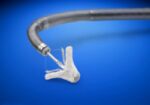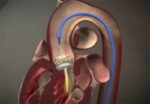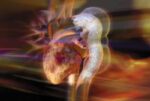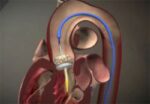Original title: Outcomes of Endovascular Aneurysm Repair with 2 different Endograft Systems With Suprarenal Fixation in Patients With Hostile Infrarenal Aortic Anatomy. Reference: George A. Antomiuo et al. Vascular Endovascular Surgery 47(1):9-18 The unfavorable or hostile anatomy of abdominal aortic aneurysms is a limitation of endovascular treatment and is related to complications after implantation such as migration, the...
Severe Mitral Insufficiency Following Mitral Valvotomy
Original title: Acute Severe Mitral Regurgitation Following Balloon Mitral Valvulotomy: Echocardiographic Feature, Operative Finfing and Outcome in 50 Surgical Cases. Reference: Manjunath C. Nanjappa, et al. Catherization and Cardiovascular Intervention 81:603-608 (2013) Severe Mitral Insufficiency Following Mitral Valvotomy (VPM) is a major complication; though not frequent, (0.9%-2%) it is life threatening and requires resolution through valve replacement. The...
Critical limb ischemia with infrapatellar disease. High odds of limb salvage despite restenosis.
Original title: Long-term outcomes following infrapopliteal angioplasty for critical limb ischemia. Reference: Ruby C. Lo et al. J Vasc Surg 2013;-:1-10. Angioplasty has established itself as an alternative for the treatment of infrainguinal peripheral disease with comparable results in terms of limb salvage for surgery. However, this data refers to the iliac or femoral territory but it is...
Mitraclip® year results
Original title: Residual Mitral Valve Regurgitation After Percutaneous Mitral Valve Repair with Mitraclip® System in a Risk Factor of Adverse one-Year Outcome Reference: Liliya Paranskaya et al. Catheterization and Cardiovascular Intervention 81:609-617 (2013). Currently, the gold standard for the treatment of mitral regurgitation (MR) is surgery but 20% of patients are rejected because they present a high surgical...
TAVI also for pure aortic insufficiency
Original title: Transcatheter Aortic Valve Implantation for Pure Severe Native Aortic Valve Regurgitation. Reference: David A. Roy et al. J Am Coll Cardiol 2013. Article in press. Percutaneous aortic valve replacement (TAVI) has become a standard treatment for patients with severe aortic stenosis and a high surgical risk. However for those patients who have pure aortic insufficiency, (failure...
Chronic Total Occlusion: increasingly better results and fewer complications.
Original title: Angiographic Success and Procedural Complications in Patients Undergoing Percutaneous Coronary Chronic Total Occlusion Interventions. A Weighted Meta-Analysis of 18,061 Patients From 65 Studies. Reference: Vishal G. Patel et al. J Am Coll Cardiol Intv 2013. Article in press. Chronic Total Occlusions (CTOs) are found in between 15% and 30% of patients undergoing coronary angioplasty. Successful CTOs...
Critical limb ischemia, always try to revascularize
Original title: Endovascular Treatment for Infrainguinal Vessels in Patients With Critical Limb Ischemia : OLIVE Registry, a Prospective, Multicenter Study in Japan With 12-Month Follow-up. Reference: Osamu Iida et al. Circ Cardiovasc Interv. 2013;6:00-00 Patients with critical limb ischemia typically reveal rest pain and ischemic ulcers or gangrene. Prognosis is poor and mortality and amputation rate are elevated....
Multislice tomography to stratify low-risk chest pain. Lower cost and larger revascularization.
Original title: Outcomes After Coronary Computed Tomography Angiography in the Emergency Department. A Systematic Review and Meta-Analysis of Randomized, Controlled Trials. Reference: Edward Hulten et al. J Am Coll Cardiol 2013. Article in press Chest pain is the second most common cause for visiting an emergency department. In all consultations, only few are finally acute coronary syndromes, for...
Chronic Type B Dissection, better with endoprosthesis than with medical treatment
Original title: The results of stent graft versus medication therapy for chronic type B dissection Reference: Xin Jia et al. J Vasc Surg 2013;57:406-14 In many institutions patients with Chronic Stanford Type B Aortic Dissection is most often treated medically, and the thoracic endovascular aortic repair implant TEVAR or the surgical procedure are reserved for those who evolve...
Post TAVI LVEF Improvement: Only with No New Conduction Defects
Original title: Impact of a New Conduction Defect Alter Transcatheter Aortic Valve Implantation on Left Ventricular Function Reference: Rainer Hoffmann, et al. J Am Coll Cardiol Intv 2012;5:1257– 63. TAVI development in high risk patients can produce new conduction defects and require a definitive pacemaker in almost a third of treated patients. The aim of this study was...









